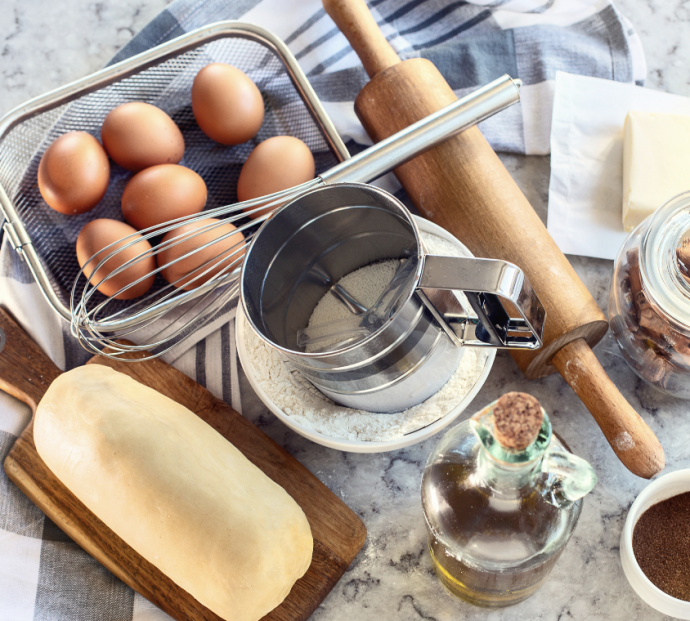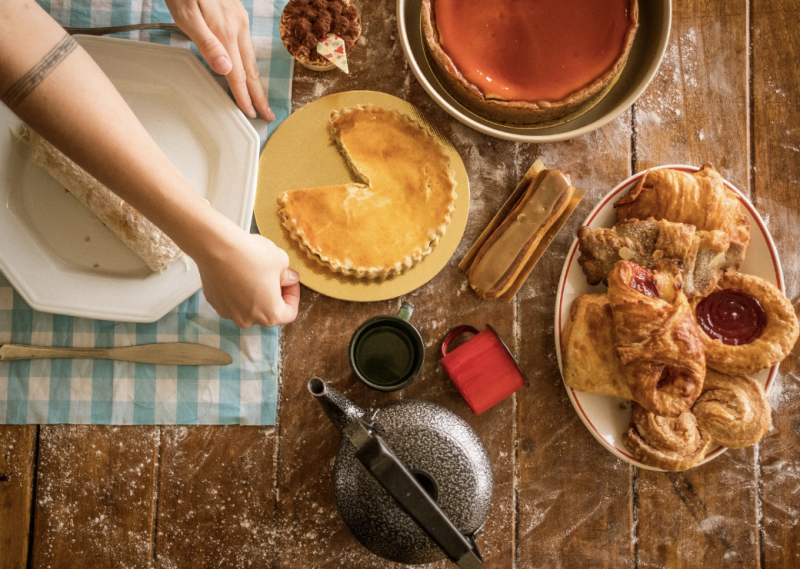12 Baking Tips: Baker’s Dozen Checklist

The following “Baker’s Dozen” checklist of techniques is universally helpful for baking success. Before you start any baking project, take a glance at this list to make sure you’re on track to make your best baked goods.

1. Mise en place, which means “everything in place,” is a system employed in every professional kitchen and was the first lesson I learned in pastry school. For easy and efficient baking, always read through your recipe, then gather your ingredients and tools before you begin. This helps ensure that you have everything you need to complete the dish. Practice mise en place and you won’t find yourself looking for the sugar while your egg whites are over-whipping.
2. Prep the baking pan.
Nothing is more frustrating than having your beautiful cake or bread hopelessly stuck in the pan. It’s also frustrating to witness your cookies spreading too thin because the pan was buttered when it shouldn’t have been. Follow the directions to be sure you’re preparing your pan appropriately.
3. “Dip and sweep” dry ingredients.
This method is preferred if you’re not using a kitchen scale to weigh your ingredients. Using a proper dry measuring cup, dip the cup into the bag of flour to fill, then sweep away the excess so you have a level cup of flour.
4.Temper ingredients according to the recipe.
For baking, this is often room temperature. Room temperature is 65° to 70°F.
5. Sift and/or whisk the dry ingredients as specified in the recipe. Sifting not only aerates the flour, it also removes lumps and mixes the ingredients. Whisking dry ingredients ensures that the salt, leavening, and other dry ingredients are properly distributed. If your baking powder or baking soda is not properly distributed, you may get air pockets and “tunnels” in your baked goods.
6. Mix the ingredients in the order and manner described in the recipe.
How ingredients are mixed is as important as using the right amount of each ingredient. For example, did you know that if you add lemon juice to eggs before adding the sugar you’ll “cook” the eggs?
7. Avoid overworking the dough.
As soon as liquids are combined with flour, the protein in the flour (gluten) is activated. As you work the dough, the gluten gets stronger and the dough gets tougher. For tender biscuits and cakes, you won’t want a tough dough, so mix only to combine ingredients. If you’re making bread, on the other hand, you’ll knead the dough to develop the gluten for that chewy texture.
8. Follow resting and chilling times specified in the recipe.
Some doughs need to rest or chill before you work with them. If you roll pie dough as soon as it’s made, without first resting it in the refrigerator, the butter will melt and gluten will develop. You’ll end up with a tough piecrust with no flakiness.
9. Use the specified size and type of baking pan.
These recipes are developed and tested for the size and type of pan specified. Using a different pan can change the baking time and outcome of a recipe. Try to use a pan as close to the size and shape as that listed in the recipe.
10. Generally, bake in the middle rack of the oven, unless otherwise specified in the recipe. If you’ve got hot spots in your oven, flip and rotate your pans around to avoid burning your baked goods in those spots.
11. Check for doneness before the minimum time. Ambient temperature, pan materials, and oven fluctuations can all affect baking time. To be safe, I encourage you to begin checking your baked good several minutes before the recommended time.
12. Let baked goods cool properly, according to the recipe. Some baked goods are best eaten when slightly warm, but many others must cool completely before you eat them. If you slice a cake before it’s cooled, for example, the starches won’t have gelled, and the cake will fall apart.
